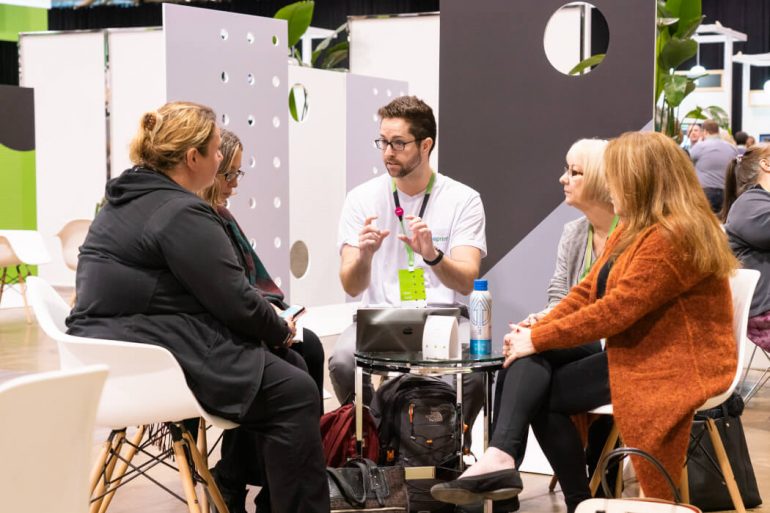For many small businesses, surviving another year is the biggest marker of success. Unfortunately, 50 percent of small businesses fail by year five, showing just how difficult survival can be. Some failures are inevitable, due to market forces, or a lack of working capital. However, many of the reasons why businesses fail are controllable. QuickBooks, a cloud-based accounting and business management software company, is focused on increasing the survival rate of small businesses in Canada by helping business owners make the most of what they can control.
Speaking to BetaKit, Intuit QuickBooks’ Canadian Head of Product, Melika Hope explained the unique methods the company uses to gather customer feedback and identify which technologies and content will help small business owners succeed.
Follow your customers home (no, really)
When a business makes others more successful through using its product, that business is destined for success. Creating the right products and services to enable success, however, requires intently listening to those customers about their pain points. In many companies, this feedback takes the form of regular surveys or taking notes from customer complaint tickets.
“We’re watching them work, we’re asking them questions, we’re seeing the day-to-day.”
– Melika Hope, Canadian Head of Product
While helpful, traditional methods of gathering feedback don’t always capture the whole picture, said Hope, because surveys and customer complaints sometimes lack depth. Further, customers may have trouble encapsulating their problems into words or yes/no questions on a survey. That leaves a lot of potential insight on the table. Hope said QuickBooks takes gathering customer feedback a step further and focuses on several methods of collecting feedback face-to-face from customers.
One method the company uses is called a “Follow Me Home.”
“We’re actually going to a customer’s place of work,” said Hope. “We’re watching them work, we’re asking them questions, we’re seeing the day-to-day, and identifying potentially painful parts of their experience that they might not have been able to tell us in an interview.”
This gives QuickBooks staff at all levels – Hope said even the company’s CEO goes on Follow Me Homes – the opportunity to see customers in their native work environment. If visiting the office isn’t feasible for customers, QuickBooks has another method of gathering feedback: inviting them to any QuickBooks office. Hope said the company built a studio in the office where customers are invited to see what’s new and give feedback on upcoming projects.
When one-on-one interaction doesn’t fit the bill, QuickBooks has two event strategies. The company hosts pop-up shops or other activations at events hosted by partners so they can talk to customers. At their own events, like QuickBooks Connect, which kicked off Monday in Toronto, the company also performs rapid prototyping.
“We’ll show a customer a prototype of an experience and see how they interact with it,” said Hope. “After we’ve done that with one customer, we’ll change it slightly for the next customer. By the end of the day, if we’ve shown that prototype to 20 customers, we’ve had 20 different iterations of what the feature would look like.”
“The part I get most excited about is actually interacting with the customers,” said Hope.
Prioritizing for impact
Collecting data in multiple ways presents a challenge for QuickBooks: namely, how to digest, prioritize, and turn the feedback into useful features or products. Hope said that the QuickBooks prioritization process can start with collating all the information, usually by writing every piece of feedback or any observations on sticky notes. From there, pieces of feedback or observations are bucketed into product themes, such as cash flow or taxes.

This process helped QuickBooks digest customer feedback and build features that could make an impact. For example, the company just launched a mileage tracker. Mileage deduction can be one of the biggest tax deductions a self-employed or small business owner can claim to reduce their tax bill, but it can also be extremely painful to track. Announced at QuickBooks Connect, the new feature allows for easy mileage tracking through the app and online, and is accessible to all QuickBooks Online customers.
Looking at impact for customers and partners permeates not just QuickBooks’ technology products but also how they plan their events such as QuickBooks Connect.
Instead of planning the workshops around expert speakers, QuickBooks Connect uses a dual strategy for identifying content. Some of it is planned by the QuickBooks team to help customers learn about “hard to come by technologies” for small business owners, such as blockchain, AI, or machine learning. Much of the content, though, comes from the same place as product feedback: their users.
“A lot of the topics come to us from our partners,” said Hope. “A lot of presenters at the conference are accountants and bookkeepers that work with QuickBooks Online. So a lot of them say ‘hey, here’s something that I’ve learned in my business that I think can be really effective to the rest of your QuickBooks Online Customers.’ We use that formula to determine what would be the best suite of presentations we can offer.”


